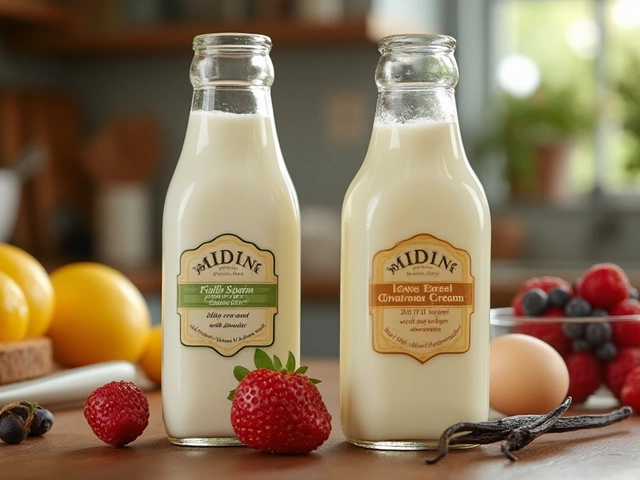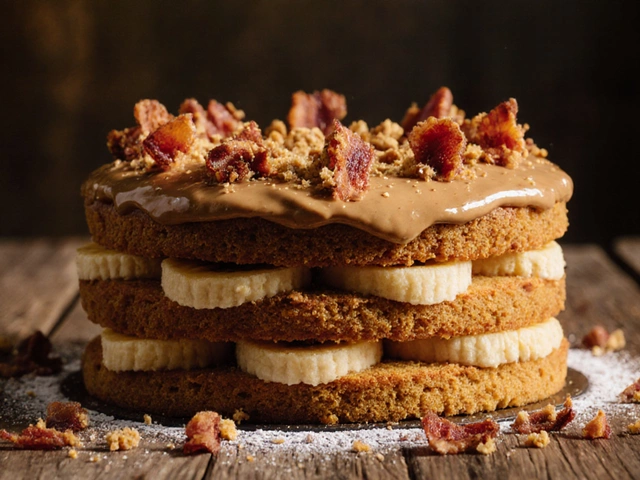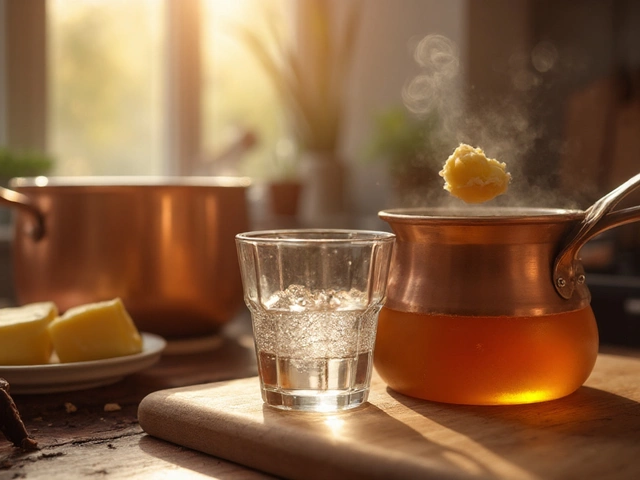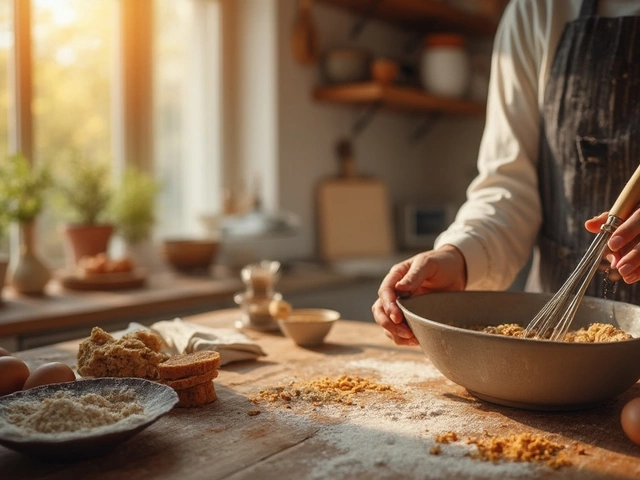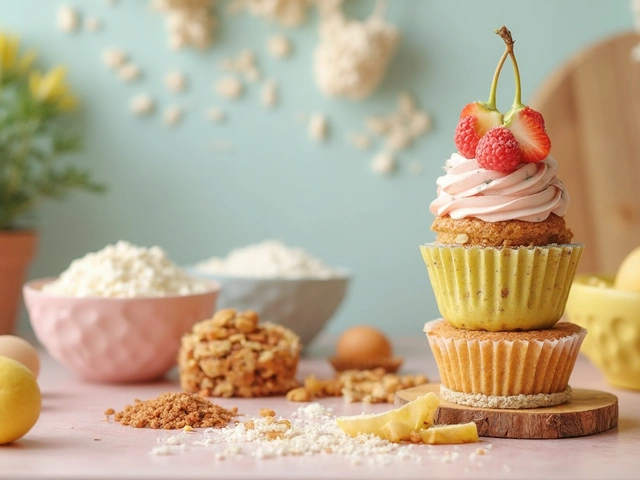Cheesecake Baking: Easy Tips for Creamy, Perfect Results
If you’ve ever cut into a cheesecake that cracked or turned grainy, you know how frustrating it can be. The good news? A few simple tweaks can turn any bake into a silky, buttery slice that looks as good as it tastes. Below you’ll find the basics you need, plus shortcuts for when you want to skip the egg without losing texture.
Common Mistakes and How to Fix Them
First off, don’t over‑mix the batter. When you whip the cream cheese, sugar, and eggs together for too long, you incorporate too much air. That air expands in the oven and creates cracks on the surface. Mix just until everything is smooth and glossy.
Second, watch the oven temperature. Most cheesecake recipes call for a low, steady 300°F (150°C). Baking at a higher heat makes the edges set while the center stays liquid, which then collapses as it cools. If your oven runs hot, pop a thermometer in and adjust accordingly.
Third, use a water bath. Place the springform pan inside a larger pan filled with hot water about halfway up the sides. The water bath adds gentle, even heat and prevents the top from drying out. If you forget the bath, the cheesecake might still turn out, but you’ll likely see a dull, cracked top.
Lastly, let the cheesecake cool gradually. Turn the oven off, crack the door, and let the cake sit for about an hour. Then move it to the fridge for at least four hours or overnight. Rushing the cooling process is a fast track to cracks and a watery center.
Egg‑less Cheesecake Options
Want to skip the egg? It’s not a huge deal. Eggs mainly help bind the mixture and add a bit of lift. You can replace one large egg with ¼ cup of plain yogurt, silken tofu, or a mix of 1 tbsp cornstarch and 2 tbsp water. Each substitute keeps the batter smooth and stops it from separating.
One popular switch is using Greek yogurt. Its natural tang mimics the flavor of the egg‑y yolk while adding creaminess. Just whisk the yogurt into the cream cheese and sugar until there are no lumps.
If you’re vegan, try a blend of soaked cashews, coconut milk, and a dash of lemon juice. This combo gives a rich, dairy‑free base that still bakes up firm. Add a little agar‑agar if you need extra set‑in power.
Whatever you choose, remember to keep the batter cold before it hits the oven. Chilled batter shrinks less in the heat, which means fewer cracks.
Putting these tips to the test is easy. Grab a simple vanilla cheesecake recipe, follow the mixing and temperature guidelines, and swap the egg for yogurt if you’re interested. Bake, water‑bath, slow‑cool, and you’ll have a slice that looks like it came from a patisserie.
Cheesecake baking doesn’t require a culinary degree—just a few mindful steps. Keep the mix smooth, the oven low, the water bath ready, and the cooling gentle. And if you’re skipping eggs, a dairy or plant‑based binder does the trick without sacrificing texture. Happy baking, and enjoy that creamy bite!
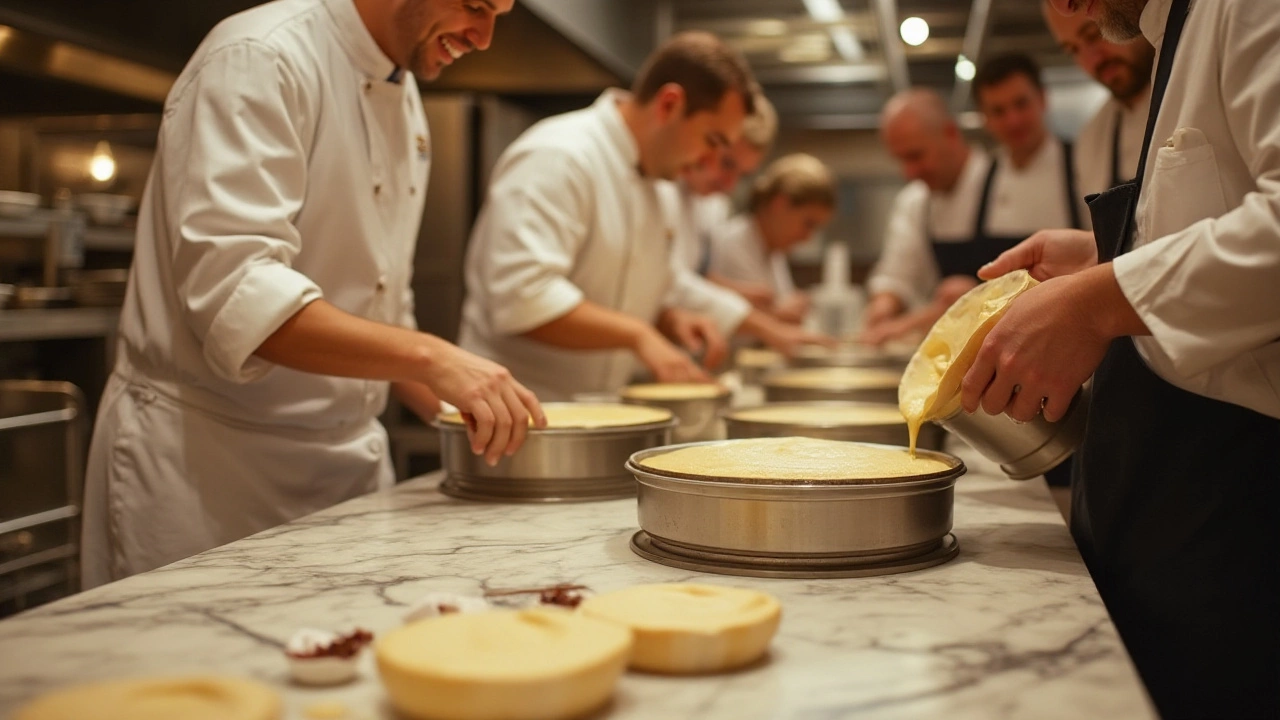
Do Cheesecake Factory Cheesecakes Go Through Baking? Discover the Truth and More!
The Cheesecake Factory is famous for its wide array of delectable cheesecakes, yet many people wonder about their preparation process. Do they actually bake their cheesecakes, or is there another method involved? This article delves into the details of how these beloved desserts are made, explores the secrets behind their creamy texture, and shares some tips for whipping up a cheesecake that can rival that of Cheesecake Factory's. Learn about baking techniques, the role of ingredients, and the nuances that make these desserts stand out.
View More
